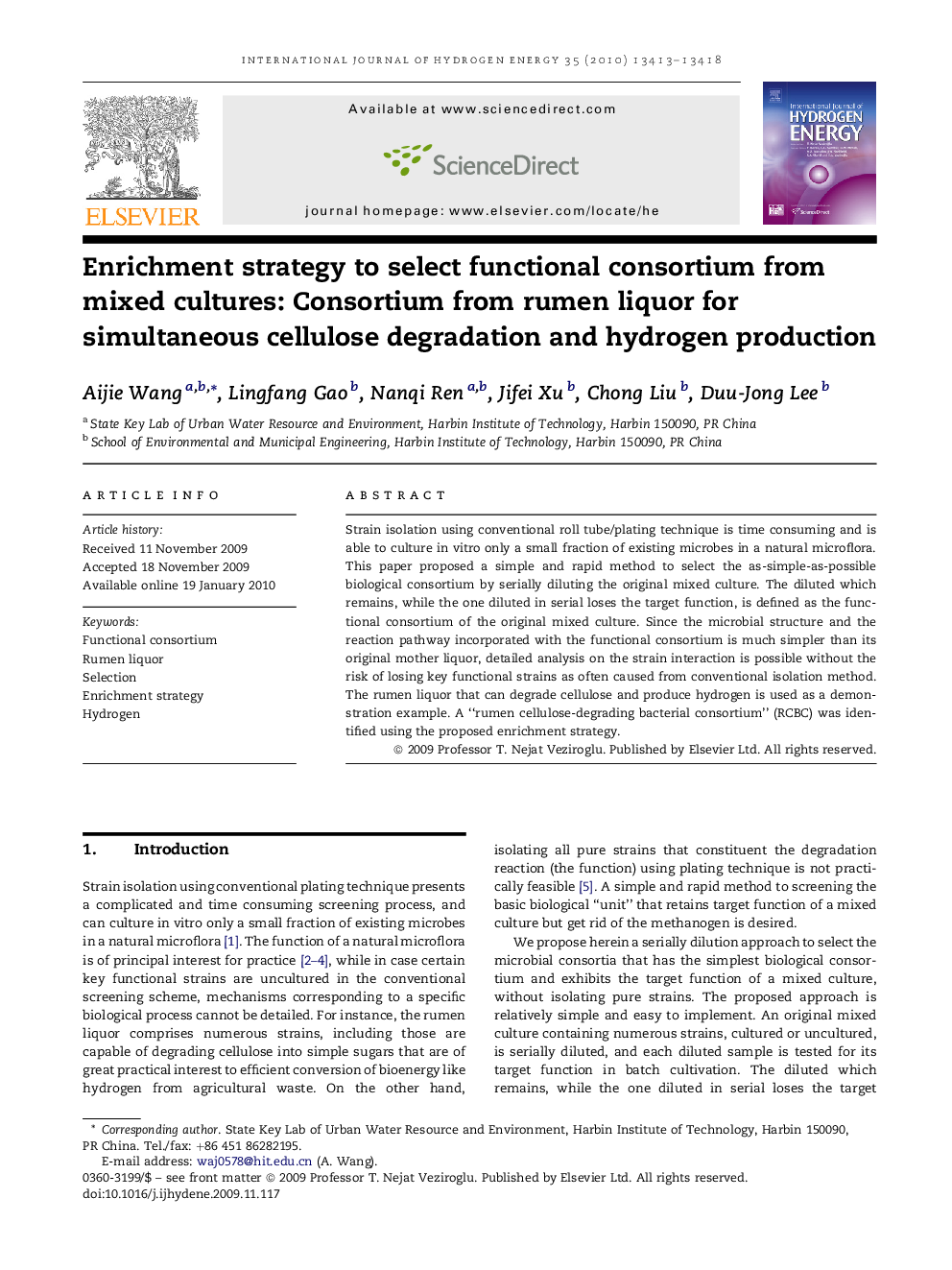| Article ID | Journal | Published Year | Pages | File Type |
|---|---|---|---|---|
| 1282707 | International Journal of Hydrogen Energy | 2010 | 6 Pages |
Strain isolation using conventional roll tube/plating technique is time consuming and is able to culture in vitro only a small fraction of existing microbes in a natural microflora. This paper proposed a simple and rapid method to select the as-simple-as-possible biological consortium by serially diluting the original mixed culture. The diluted which remains, while the one diluted in serial loses the target function, is defined as the functional consortium of the original mixed culture. Since the microbial structure and the reaction pathway incorporated with the functional consortium is much simpler than its original mother liquor, detailed analysis on the strain interaction is possible without the risk of losing key functional strains as often caused from conventional isolation method. The rumen liquor that can degrade cellulose and produce hydrogen is used as a demonstration example. A “rumen cellulose-degrading bacterial consortium” (RCBC) was identified using the proposed enrichment strategy.
